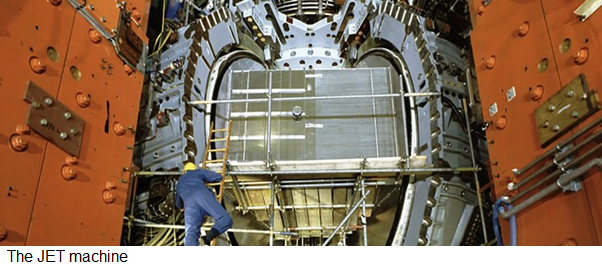 News stories riddled with firm words about the controversies surrounding the process of fracking have recently been at the forefront of discussion in energy production circles. As a source of power it has come under large amounts of scrutiny due to its potential to pollute water supplies and cause earthquakes, and because of its perpetuation of the obsession with clinging on to fossil fuels – more information on which can be found here.
News stories riddled with firm words about the controversies surrounding the process of fracking have recently been at the forefront of discussion in energy production circles. As a source of power it has come under large amounts of scrutiny due to its potential to pollute water supplies and cause earthquakes, and because of its perpetuation of the obsession with clinging on to fossil fuels – more information on which can be found here.
But over-shadowed by the fracking dispute are some promising and far more bold initiatives taking place to achieve the goal of providing energy in a post-fossil fuel world, initiatives that have subsequently been somewhat relegated to the side-lines of public attention.
Obviously there are the famous front-runners: wind power, hydropower, and solar power are among the best known.
The problem with these lies in the scale on which each process needs to be undertaken to produce the energy required. Giant wind farms erected in the sea and endless carpets of solar panels may not be a future some people will want to be a part of.
So if not these and if not fracking (or any other fossil fuel based process), what else? Well, some very talented and ambitious researchers are now trying to use a scaled-down version of the process that powers the sun to provide the world with a new energy source for the future – this is known as nuclear fusion.
According to the EFDA (European Fusion Development Agreement), demand for energy worldwide may quadruple by 2100, meaning that a high-yield, long-lived, and stable source of energy needs to be established. It is likely that fracking and other current methods of fossil fuel usage will not be able to cope with this increase, not to mention them being finite nature – other renewables such as solar power may not be up to the challenge either.
In response to this, projects like JET (Oxfordshire, UK) and ITER (St Paul-lez-Durance, France) now harbour (or will harbour in ITER’s case) giant nuclear fusion reactors, with the aim of utilising them to try and draw energy from fusion reactions (these will be discussed below).
But why is fusion a better future for energy? What do JET and ITER actually do? To answer this, Inlec spoke to a number of experts in involved in nuclear fusion – they’re busy people and we are very grateful for their input to this article.
Nuclear Fusion: what is it?
Existing Projects
The commercial use of nuclear fusion as a viable energy source is no longer an idea locked in the realms of science fiction. For years now projects have been underway to harness this power and overcome the technological difficulties that surround fusion power. As mentioned earlier, two of the world’s major centres for nuclear fusion lie in the UK and France: JET and ITER.
JET:
JET is a UK based experimental fusion project located at Culham Centre for Fusion Energy. Its fusion reactor (tokomak) is currently the biggest in the world, although this will not be the case once its colossal successor ITER is built (see below).
Construction on JET started in 1977 and it was completed and opened in 1984 – its major milestone came when it played host to the world’s first controlled release of fusion energy in November 1991. Today, JET still conducts extensive fusion research.
To get an insider’s look at work on JET, Inlec spoke to Duarte Borba, JET’S Senior Advisor:

Duarte Borba: Senior Advisor at JET
- Q: What advances has JET made in recent years towards the goal of producing energy from nuclear fusion?
A: One key aspect for the successful development of Fusion Power is the materials choice for the interior of the device, i.e. the materials that will face the harsh conditions near the very high temperature fusion plasma. The use of very powerful magnetic fields keeps the fusion plasma from contacting directly the walls, but this containment is not perfect and some of the energy escapes leading to the erosion of the plasma facing components.
The materials selected to be used in the next step fusion device ITER are Tungsten and Beryllium; and JET has been doing key experiments with this precise mixture of materials in preparation of the operation of ITER. These experiments have been very successful, and the recent results have been very important in supporting the choice of materials to be used in ITER.
- Q: What are the technological difficulties surrounding work with nuclear fusion?
A: Fusion relevant conditions have been demonstrated on JET, and a significant amount of fusion power has been produced (>16 MW). However, the process needs to be more efficient, for it to produce more energy than the energy required to achieve the conditions for fusion to occur. For this, a more powerful magnetic field and a larger device is required. This is the main objective of the ITER experiment, under construction in southern France, together with the demonstration of the required technologies to sustain net energy production (>500 MW) for long periods of time (1000 s).
- Q: Are there are any political barriers you have to cross in doing research like this?
A: Fusion research is strongly supported worldwide and it is being carried out in an international collaborative framework. The ITER project is an international collaboration involving all countries in the EU and Switzerland, together with China, Russia, South Korea, Japan, India and the United States.
- Q: In your opinion, how long will it take for nuclear fusion to become useable as an energy source for the world?
A: The aim is to build the first fusion power plant in the 2030s, which would produce electricity by 2050. The European Commission’s new Framework Programme for Research and Innovation (Horizon 2020) has just been agreed and includes the resources to implement the R&D roadmap for achieving the 2050 target. If all goes according to plan, during the second half of this century fusion will become one of the world’s major sources of energy.
ITER:
ITER is a current project being undertaken in the south of France to build the largest tokomak on the planet, with a view to actually using it as a genuine producer of energy to be made available to the public. This will be done by using the heat produced by the fusion reaction (mentioned earlier) to create steam, which will in turn power turbines and provide us with energy. Michel Claessens, Head of ITER Communications, told us more:

Michel Claessens: ITER’s Head of Communications
- Q: The ITER project looks very exciting for the future of energy – how is it progressing to date?
A: ITER will be the biggest fusion reactor on Earth. Here in St Paul-lez-Durance (80 km from Marseille, in France), the ITER project is now transitioning to full construction. There is an increasing pace of construction activities at the ITER site and good progress in the manufacturing of the reactor components and supporting systems, currently underway in all the ITER Members. Major contracts have been placed and many leading industries are now involved in the project; the first delivery of large components is expected on site in the third quarter of 2014. The end of the buildings construction is scheduled for 2020.
- Q: How is ITER different to previous nuclear fusion efforts, for example JET?
A: ITER will be the biggest fusion reactor on Earth, about 10 times bigger (in volume) than JET. And also ITER is the first fusion reactor specifically designed and built to produce energy. It is expected that ITER will produce 10 times the energy injected in the machine
- Q: There seems to have been some delays and difficulties in building the site for ITER; why is that? What have the major delays or difficulties been caused by?
A: For a project of such unprecedented nature and scale, involving worldwide cooperation and billions of euros of expenditure, challenges to the schedule along the way can be expected.
The ITER Organization has identified the following impediments to optimal schedule performance: delays in the signature of agreements and contracts, lengthy design review and design change processes, and complex approval procedures for nuclear components.
It is also true that the earthquake and tsunami in Japan on 11 March 2011 has affected some of the installations producing components for ITER. In particular, the buildings for superconducting magnet test equipment and neutral beam test equipment were seriously damaged. In its initial assessment, the Japanese government estimated at one year the delay in its contribution of key components.
- Q: In your opinion, how long will it take for nuclear fusion to become useable as an energy source for the world?
A: According to current plans and research, it is expected that fusion could become a commercial energy source around 2050.
Source: inlec.com



















































































